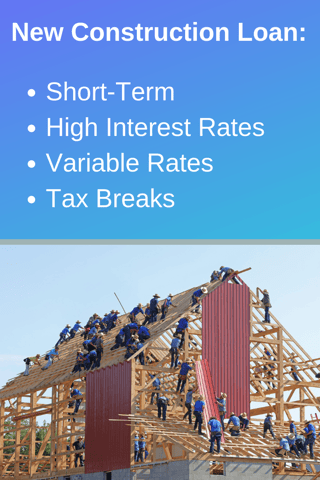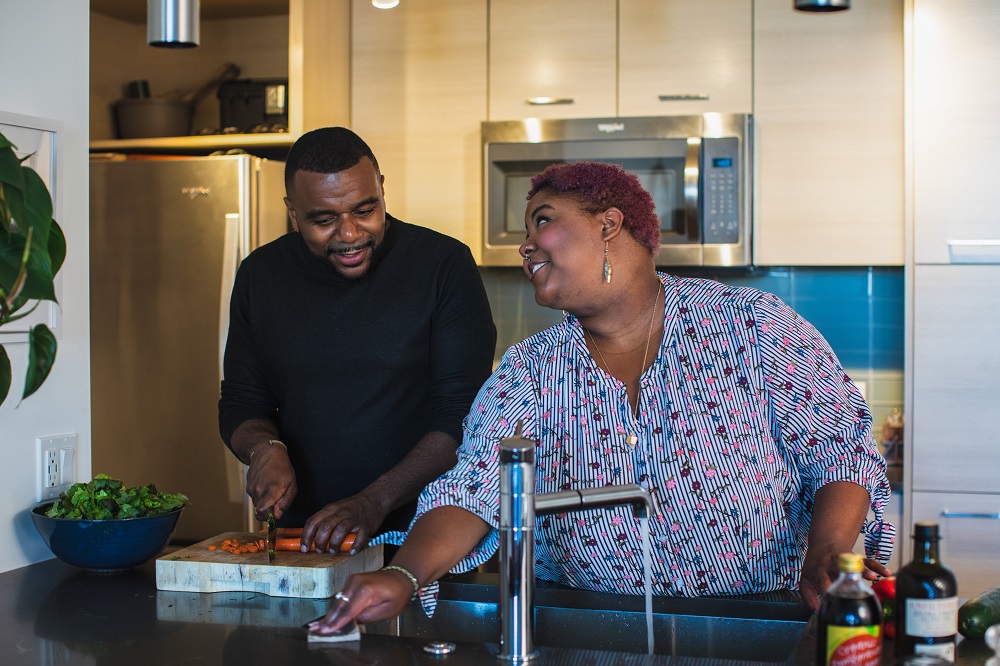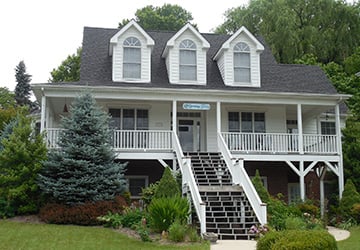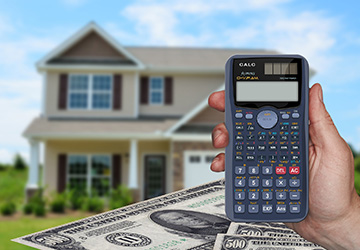When it comes to buying a home, you may consider building a new one. Building a home comes with a lot of decisions -- where to build, floor plan, size of the house, flooring, lighting, etc. Before you start looking at curtains and cabinets, let's take a look at your financing options to get you started on the right foot.
If you wish to have a new home built, you will need to get approved for a construction loan. These loans are often more difficult to qualify for and you must have good credit, a stable income, and a low debt-to-income ratio. It's important to get pre-approved before you work with a contractor. There are a lot of expenses leading up to building a home, including blueprints and design, and if you have these drawn up before getting pre-approved for a loan, you may be out hundreds or thousands of dollars (or more) if you fail to get approved.
 Different types of new construction loans are available, including a construction-to-permanent loan (CPloan) and a stand-alone loan. These loans typically run for approximately one year, the amount of time it would take to build the average home. Let's take a look at each option.
Different types of new construction loans are available, including a construction-to-permanent loan (CPloan) and a stand-alone loan. These loans typically run for approximately one year, the amount of time it would take to build the average home. Let's take a look at each option.
Construction-to-Permanent Loan (CPloan)
CPloans require a 20-25% down payment, have a variable interest rate, and they convert to a 15- or 30-year mortgage once the work has been completed. The contractor takes scheduled draws off of the loan each time he/she gets to a new stage of construction (ex. rough framing). The bank distributes these payments as work is completed. While your house is under construction, you will only be responsible for paying interest on the outstanding balance. Once the construction's fully complete and all inspections have been approved, you will choose a fixed or variable-rate mortgage. At this point, you'll have a permanent mortgage and will pay interest and the principal as you pay down the loan.
- 20-25% down payment
- Variable interest rate
- Pay interest only while house is under construction
- 1 closing
- Converts to 15- or 30-year mortgage once construction's complete (pay interest and principal)
Stand-Alone/Construction-Only Loan
A stand-alone, or construction-only, loan also has a variable interest rate but the down payment is smaller and there are 2 closings due to 2 separate loans (construction loan and permanent mortgage). A stand-alone loan has a short-term repayment period vs. a long-term mortgage. Once construction's complete, the loan must be paid off in full. You will need a large amount of cash to pay off the loan or you will need to find a lender and apply for another loan. For buyers who are selling a home, this loan is more fitting because they can use money from the sell of their existing house to pay off the mortgage on the completed house (and you may be able to get a tax deduction). If you need to get a mortgage loan, know that they aren't guaranteed and you may not qualify. If you do qualify, you may end up paying a higher interest rate. It's important to be prepared financially for a stand-alone loan or you may not be able to move into your new house.
- Smaller down payment
- Variable interest rate
- 2 closings
- 2 separate loans
- Short-term repayment period
- Loan must be paid in full once construction's complete
- Option: apply for a mortgage to pay off loan (difficult to get and can come with a higher interest rate)
As you can see, you have options when it comes to financing the build of a new home. Talk to your lender about how to choose the right loan for your construction needs and do your research when choosing a contractor. Talk to friends about contractors they've used, get references from different builders, and walk through homes they've built (including not-so-recent builds). Talk to a variety of lenders before settling on a loan, as different lenders offer different rates. If your builder offers a standard financial package, you can accept it or shop around for different options. Whether you choose a CPloan or a stand-alone loan, you can look forward to enjoying a home built just for you.














